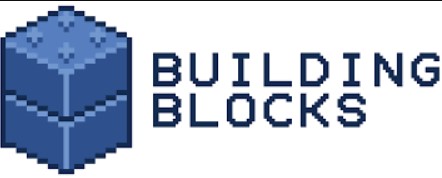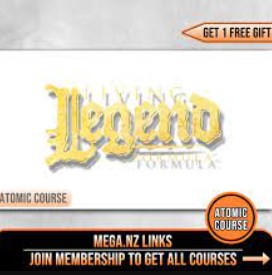Marketing Automation with ActiveCampaign – ActiveCampaign
Marketing Automation with ActiveCampaign – ActiveCampaign Download. This guide definitively answers the question by explaining what marketing automation is…
Original price was: $24.00.$13.00Current price is: $13.00.
Unlock your potential with the Marketing Automation with ActiveCampaign – ActiveCampaign course for only Original price was: $24.00.$13.00Current price is: $13.00. at WSOLib.com! Discover our vast library of over 60,000 downloadable digital courses across Internet Marketing. Get expert-guided, self-paced learning and save over 80% compared to retail prices. Transform your skills today!
Salepage link: At HERE. Archive: http://archive.is/wj7Uf
What is marketing automation, exactly? This guide definitively answers the question by explaining what marketing automation is, what it can do for your business, and how it works to help you achieve scalable growth.
Marketing automation is the means of employing technology to continuously execute your marketing strategy. This process can happen with as little—or as much—human interaction as you like.
With the right technology and processes in place, you can shift your marketing efforts from one-on-one to one-to-many. Consider, for example, the checkout lanes at your local grocery store. Before the checkout process was automated, a cashier was needed to assist each customer at checkout. When automation is added to the equation in the form of self-checkout stations, one cashier can oversee multiple stations. As a result, checkout bandwidth increases.
So automation uses technology to optimize human performance in a way that scales your business. It’s you with 200 hands instead of 2. Cool, right?
What Does Marketing Automation Do?
That’s the high-level definition of automation. Now let’s dive a bit deeper into what it does to help you scale your business.
There are three primary functions of marketing automation:
- Lead Generation. Lead generation is the process of turning people who are strangers to your business into interested leads. This can be a time-consuming process for many business owners, but with automation, it’s like putting your lead generation on autopilot.
- Engagement. Automation facilitates engagement of your business leads with the goal of turning them into customers. It also facilitates engagement of your current customers to help customer retention and nudge current customers into upgraded services and products.
- Closing. The most important function of marketing automation is closing the deal. This happens when money is given in exchange for your product offering.
Each function necessitates the use of a different tool to be executed effectively. This is why it’s important to have a fully automated system that works synchronously across all tools in your business.
We came up with the analogy below to help you better understand how it all comes together.
How Does Marketing Automation Work?
A business fueled by marketing automation can be explained as a system similar to that of an automobile: An assembly of independent parts working in tandem to achieve a common goal—to move forward.
Think of your business as a vehicle carrying passengers (your customers) on a journey. If your vehicle is going to transport your passengers, it will need the following parts and resources:
A Driver (you, the visionary). It all begins with your vision for your business. If you’re not sure what that is, start by asking yourself:
- Who do you want to serve?
- What impact do you want your business to have on the world?
As the visionary, you are responsible for navigation, positioning your business for forward movement in the desired direction and making adjustments when necessary.
A motor (the automation). Just like the motor of a vehicle, automation is the central processing unit of your entire system. All other parts communicate to and through automation, receiving multiple inputs to produce a desired output, so all you have to do is focus on the input.
Oil (the processes). A motor is just a big chunk of metal without oil to lubricate it and help it run. Just so, marketing automation requires processes within your business to be clearly defined and in place in order to operate. When processes (oil) become outdated and ineffective, you run the risk of damaging your automation (motor), or worse, “crashing your car.”
The vehicle frame (the framework). Your framework is the underlying structure of your entire system. Used to implement your standard processes, it creates movement from the output of your automation (the motor). Simply put, your framework is how you get things done.
Fuel (your marketing strategy). Your marketing strategy serves as the fuel your system needs in order to move forward. It also determines the best type of tools (or, the best type of fuel) for the journey. If you have no strategy, you have no direction.
The dashboard (the analytics). Just like the dashboard of your car, your analytics provide insight into how well your business is doing (or how the journey is going). Is the vehicle low on fuel? Is it traveling too fast? Any adjustments or optimizations you make in your business should always be backed up with data. Instead of pulling over and asking strangers how to get to your destination, let your dashboard analytics guide you.
The car key (clear messaging). People need a way to get into the passenger seat (i.e. be added to your contact database). Only once they are seated can the customer journey begin. It is the clarity of your messaging that acts like a key, providing the specific information and instruction your contacts need in order to advance to the next steps you’d like them to take in your business. Clear messaging unlocks the vehicle door and clears an easy path to a seat.
The timing belt (your timing). Lastly, and most importantly, is your timing. Just like a slip in your automobile’s timing belt can keep the engine from running, one slippage of timing with your automation can yield grave results. Your messaging must be clear, but you also need to make sure you’re sending the right message to the right contact at the right time.
Your car can accommodate a modest number of passengers at a time. Once you have more passengers than seats, you’ve outgrown your vehicle. By scaling to a larger vehicle containing more seats—say, a train—you can meet demand.
In this analogy, the ultimate goal of automation is to graduate from car driver to train conductor:
With automation, you can seamlessly scale your business from “car” size to “train” size in order to carry a greater number of contacts on the customer journey at their convenience.
Summary
Marketing automation is the process of using technology to continuously execute your marketing strategy. By automating functions like lead generation, lead and customer engagement, and deal closing, you can scale your business to touch even more contacts.
Learn how to build your first automation in ActiveCampaign here.
Secure your future with the Marketing Automation with ActiveCampaign – ActiveCampaign course at WSOLib.com! Gain lifetime access to expertly curated content, empowering your career and personal development.
- Lifetime Access: Enjoy unlimited access to your digital courses.
- Huge Savings: Prices are consistently up to 80% lower than original sales pages.
- Secure Transactions: Shop with confidence using our trusted payment methods.
- Actionable Knowledge: Acquire real-world skills from diverse topics.
- Instant Delivery: Start learning immediately after purchase.
- Device Flexibility: Access your courses on desktop, mobile, or tablet.
Begin your learning journey with WSOLib.com!
Specification: Marketing Automation with ActiveCampaign – ActiveCampaign
|
User Reviews
Only logged in customers who have purchased this product may leave a review.





There are no reviews yet.